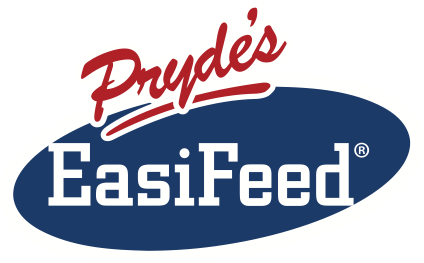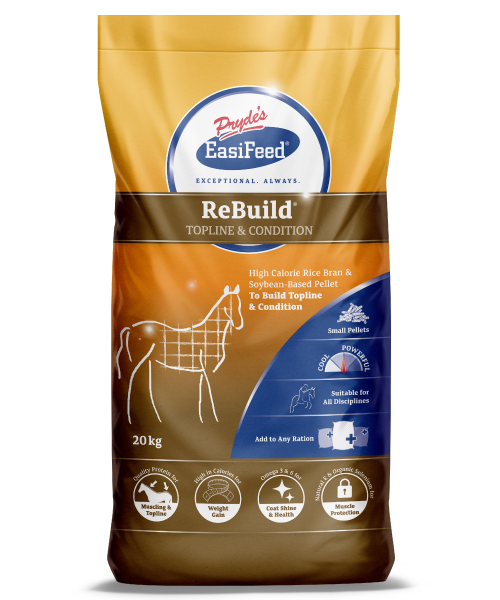Tying up is a painful condition for a horse and a frustrating one for trainers and owners, with affected horses constantly suffering setbacks in race preparations. Symptoms can range from severe muscle pain and distress, firm, hard muscles following exercise, apparent colic, excessive sweating, elevated heart and respiration rates, a stiff gait, muscle tremors and a reluctance to move to more mild and elusive symptoms that just involve the horse feeling stiff, lazy or slightly lame.
Whether a horse suffers with severe tying up or a mild form, it will limit their performance and well being, so the more you can do to reduce the frequency and severity of bouts of tying up for affected horses, the better their performance and health will be.
What is tying up?
Tying up, also called exertional rhabdomyolysis is a group of diseases that cause muscle damage and pain during and immediately following exercise. There are two main forms of tying up; polysaccharide storage myopathy (PSSM) and recurrent exertional rhabdomyolysis (RER). It is the RER form of tying up that most commonly affects racing thoroughreds.
Horses affected by RER tend to exhibit abnormal and excessive muscle contractions, likely due to a heritable defect in calcium regulation within their cells. RER is often triggered by exercise and excitement and it is well recognised that young fillies and horses with a nervous temperament are most often affected. It appears that the older a horse gets, the less prone it is to the disease.
Tying up is best diagnosed using a blood sample. Horses with tying up will exhibit significantly elevated levels of muscle proteins like creatine kinase (CK) and aspartate aminotransferase (AST). Speak with your veterinarian about these tests.
Dietary management of horses with tying up
Close dietary management of horses that tie up can help to reduce the incidence or severity of the disease in affected horses. Following are 5 tips for feeding horses that tie up:
Tip 1 – Minimise starch and sugar intake. Diets high in starch and sugars (mainly those that contain large amounts of grain) are well known to make tying up occur more frequently and severely.
Current recommendations suggest that keeping the amount of energy supplied by starch and sugars at 20% or less of the total digestible energy intake will help reduce the incidence and severity of tying up. In real terms, this means keeping grain intake at or below 3 to 4 kg/day for a 500 kg horse.
Tip 2 – Use oils and high energy fibres to supply additional energy. Three to 4 kg of grain or grain based feeds is not going to be able to supply enough energy to maintain a horse in full training, so additional sources of energy must be fed.
Current recommendations suggest that horses with RER should be receiving 20 to 25% of their daily digestible energy intake as oil. In real terms this means adding up to 3 cups of oil per day to the daily feed of a 500 kg horse in heavy work. With these very high levels of oil, care must be taken to introduce it gradually to the diet over 3 to 4 weeks to allow time for the horse and its gut to adapt to that level of oil feeding.
High energy fibres like lupin hulls, sugarbeet pulp and soybean hulls or high fibre grains like lupins are also valuable in providing energy in the diets of horses prone to tying up.
Tip 3 – Feed a balanced diet that meets requirements for the electrolyte minerals sodium, chloride, potassium and magnesium and requirements for the antioxidants selenium and vitamin E. Avoiding very high levels of protein is also a good idea. To this end, the use of good quality grass or oat hay as the forage base of the diet is preferable to using pure lucerne hay for horses prone to tying up.
Tip 4 – Avoid oats. Anecdotally, oats seem to trigger RER tying up in horses and particularly fillies more frequently than other grains, though it is not clear why. So for horses prone to tying up use cooked grains like corn, barley and rice in place of oats.
Tip 5 – Reduce or remove the grains or grain based feeds from the diet on days off. Horses fed their full ration on rest days seem to be more likely to be affected by tying up once they resume work. You should increase the horse’s allocation of hay or chaff to compensate for the feed you have taken out of their diet on rest days.
Combine good feeding with good management
A well balanced diet containing the right amount of energy from fibre, starch and oil with all requirements for vitamins and minerals being met is only part of the puzzle for effectively managing tying up.
Horses that suffer with tying up should be allowed to gradually build up fitness and care must be taken to ensure they are never exerted beyond their level of fitness. Prolonged periods of stall confinement should be avoided, with horses that tie-up being better kept in yards so they can move around freely. Where this is not possible, they should be given as much time out of their box (picking grass, on a walker or being hand walked) as practical.
Rest days need to be managed carefully. While these horses certainly do need some time off, they should never be fully box rested, but instead should be walked, swum or turned out for voluntary exercise on these days.
Nervous horses that are prone to RER should be managed to keep their stress levels down. A few things that might help include; always stable them with a buddy close by, allow them plenty of turn-out time where possible, exercise and feed them first, try to avoid any sort of exercise or situation that increases their level of excitement or nervousness and maintain as regular a daily routine as possible.
Avoiding the knots
Following good dietary management by keeping grain intake low, providing up to 25% of daily energy intakes as oil, meeting all essential vitamin and mineral requirements including those for electrolytes and antioxidants and providing a regular exercise routine that remains within the horse’s level of fitness will all help to keep your tying up prone horses muscles ... untied.
The Pryde’s EasiFeed range includes feeds suitable for horses that tie up. EasiPerformance, a non-oat sweetfeed, ReBuild, a high fat, low starch energy supplement with extra vitamin E, organic selenium and vitamin B1 and EasiOil, high quality cold pressed canola oil are all valuable additions to an anti-tie up diet. These feeds can be fed as follows (based on a 500 kg horse):
The amount of EasiPerformance and ReBuild should be reduced by half or more on rest days with the amount of hay increased to compensate for the weight of feed reduced. The amount of hay being fed can be reduced in the lead up to a race to reduce gut fill.
Feeding horses that tie up isn’t easy and a ‘one-size-fits-all’ approach may not work for your horses. For professional help with putting together a feeding program for susceptible horses in your stable, please contact Pryde’s EasiFeed on 1300 732 267, email info@prydes.com.au or go to our Feed Selector
Dr Nerida Richards
Equilize Horse Nutrition Pty Ltd




